Having wandered the tranquil streets of Ayacucho’s historic centre, sipped coffee and savoured delicious food in a few of its plaza-facing cafes, and enjoyed a serendipitous paragliding experience high above the city, we were ready to explore a little further afield.
Located 22 kilometres north-east of Ayacucho, on the road to Quinua, the Wari ruins cover some 16 square kilometres in an isolated, elevated location in the middle of the biggest cactus forest I’ve ever seen.
Ruins and cacti are a winning combination in my book.
The Wari were an ancient civilisation who flourished between 600 AD and 1100 AD, long before the Incas arrived. Their empire extended north beyond Chiclayo and south as far as Lake Titicaca (that’s the majority of the length of the entire country), with its capital on the pampa above Ayacucho. Once home to some 50,000 people, there is now possibly the same number of cactus plants in their place.
Despite the fact that our guidebook insisted that there are no shortage of pick-up trucks and buses running the route to the ruins (and on to Quinua – the location of the Battle of Ayacucho that secured Peru’s independence), we couldn’t find any, and ended up hailing a colectivo (shared taxi) from the traffic circle at the east end of Cáceres.
Arrival at the site
We were dropped outside of a modest nondescript concrete structure. A small sign over the opposite side of the road indicated that this was in fact the location of the Wari ruins. There were no other buildings as far as the eye could see in any direction.
Once we’d paid our 3 soles entrance fee, we were directed towards the small on-site museum by a gentleman who we later discovered to be a tour guide. It soon became apparent that the services he was offering were solely in Spanish, and knowing little more than enough to get by, neither of us had much chance of understanding an entire Peruvian history lesson, so we politely declined,
“No necesitamos un guía, gracias”
We proceeded to have a quick look around the museum, which consisted of a dozen glass-fronted cabinets housing a myriad of artefacts from the Wari culture, and also the remains of a previously mummified body that had been unwrapped for our gruesome viewing pleasure.
Choosing a path
It wasn’t the concept of choosing a path that was difficult, but knowing what we’d find at the end of it. There were no maps of the site to point us in the right direction and the Spanish guide had disappeared almost as quickly as he’d first appeared, so all we were left with was our own best guestimate.
A left hand turn would follow a shaded track alongside a stone wall, or a right hand turn would follow an exposed path, flanked by prickly pears and soft, feathery grasses, that appeared to lead further into the midst of this intriguing, desolate landscape.
Can you guess which one we chose?
What we didn’t realise was quite what a cactus-fueled treat we had waiting for us. Around every corner were yet more and more cactus plants, spreading like ivy across the countryside. Pretty soon I’d actually forgotten that we’d come here to look at the ruins of an ancient civilisation. It didn’t matter anymore. We had cacti.
A disturbing discovery
We may have been the only tourists wandering the extensive grounds of the Wari ruins, but we certainly weren’t alone. We spotted a multitude of spiders who’d carefully crafted their webs between the spines of prickly pears, lizards who scurried into the undergrowth or disappeared between the cracks of the rocks, and colourful butterflies who fluttered effortlessly on the breeze.
But the creepiest of all of our discoveries was not the spiders (some of whom measured up to 10 centimetres in diameter, including their legs) but hundreds upon thousands of biblical creatures we initially mistook for birds.
From a distance they looked like birds, but the sheer number that were flying around in close proximity to the cactus plants, and the disjointed manner in which they were moving through the air (which was akin to the way bats fly), motivated us to take a closer look.
Upon further investigation, we realised that the ‘birds’ were actually locusts, and I can honestly say, with no shadow of a doubt, that I have NEVER seen so many locusts before in my life. This place was plagued with them (pun intended).
Uncovering Ruins
We continued our journey along the overgrown track, choosing the more interesting-looking route every time the path forked. Eventually this brought us to the location of the ruins of a few remaining structures from the Wari civilisation. As much as I’d love to be able to educate you about the construction and purpose of these buildings, what little information there was existed solely in Spanish.
I did however come away with this photograph, which I later managed to translate:
“Sector characterised by the presence of burial chambers of two to three floors, where people linked to political and administrative power, were buried.”
This place was becoming increasingly more eerie with every hour we spent there.
But eerie can also be fascinating, so we decided that we would embrace the site in all its eeriness, and subsequently followed the signs that pointed uphill towards a “cueva” (cave).
Just outside the cave entrance I spotted a pair of butterflies, with beautiful black and white markings, settled upon the branch of a spiny bush nearby. As I tiptoed closer, camera in hand, I realised that the butterflies were mating. Sex is probably one of the few occasions that butterflies stay still enough for you to be able to photograph them, so I wasn’t going to miss this rare opportunity.
Meanwhile, unbeknownst to me, Stu had entered the cave. I guessed where he’d disappeared to but as time went on I started to get a little worried. Exactly how big was this cave? I peered inside but could see nothing but total darkness. I shouted,
“Hello!”
But all I heard was my own voice as it echoed back to me.
He’d gone in there with only the light from his mobile phone. As I looked around me, at a landscape of cactus, locusts and burial chambers, I started to grow scared. If something happened there was no-one around to help, and it was a long way back to the site entrance, and to the lone woman sitting in an otherwise empty kiosk.
So I rang him.
“Hello”
I breathed a sigh of relief.
As he came out he recounted just how far underground the two passageways stretched. Parts of the cave roof had apparently collapsed, and he’d found bones inside – some of which he believed to be human bones.
Yup, definitely time to move on.
Having come as far as we had already, we were determined to get to the top of the site, so that we could look down upon all that we’d seen and hopefully get a better idea of the layout of the place. However the further we walked the less we seemed to be climbing and the more hours of daylight we were losing, so we made a joint decision to head back towards the entrance.
Much as I’d enjoyed the remoteness, on the flip side this was a desolate and solitary corner of the world, and not one I wanted to find myself in as dusk approached. The locusts were creepy enough; I don’t even want to think about the human bones Stu found in the cave. Or how they got there.
So we re-traced our steps back to the point at which we’d initially chosen the direction in which our Wari exploration would take us. As we stood at the T-junction, we glanced along the path we didn’t take and curiosity eventually got the better of us. We’d made it back to the entrance before dusk; an extra 30 minutes wouldn’t hurt.
It turns out, having spent hours wandering around the site, that the majority of what we actually came to see (the remains of the ancient Wari kingdom), lay just around the corner.
But sometimes it’s not about what you come to see; it’s about what you find.
Practical Info
- Entry to the Wari ruins costs 3 soles per person
- Bring plenty of water. You cannot buy any on site, and after several hours of exploring in the hot sunshine with barely any shade, you’ll need it. We learnt the hard way.
- Research transport home before you arrive. We waited outside the site, as darkness fell and the temperature dropped, and not a single bus or taxi approached. The roads are empty out here. We ended up taking the only option left to us – hitching a ride back to Ayacucho.
Have you ever visited somewhere quite like the Wari ruins? I’d love to hear your stories 🙂
If you like this article, please follow along on Facebook or Twitter, or you can look me up on Instagram or Pinterest too!
This is part of the #SundayTraveler link-up, hosted by Chasing The Donkey, Pack Me To, A Southern Gypsy, The Fairytale Traveler, and Ice Cream and Permafrost.


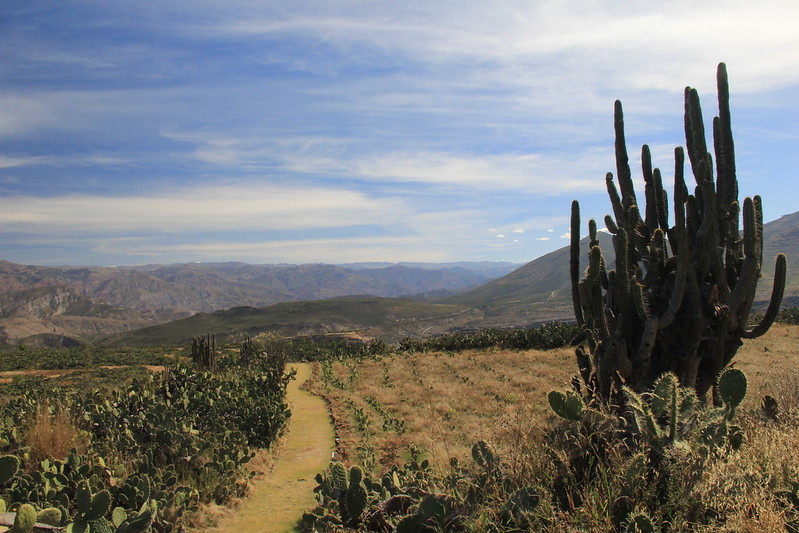
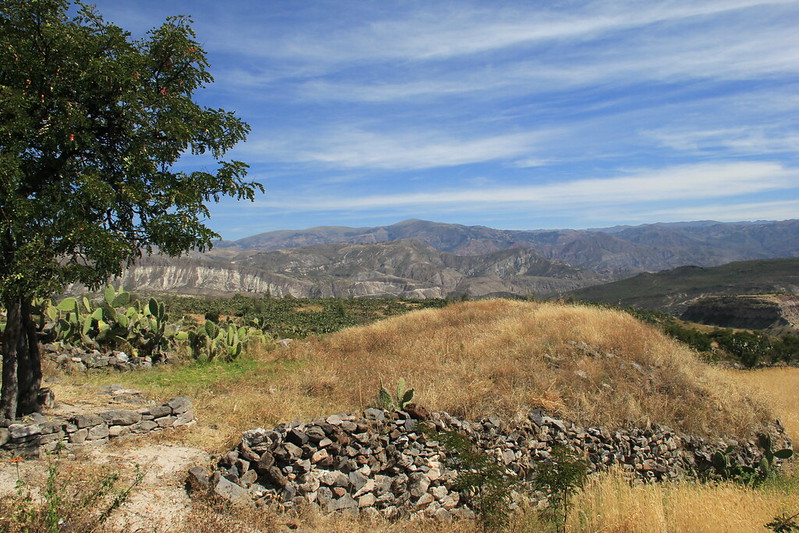
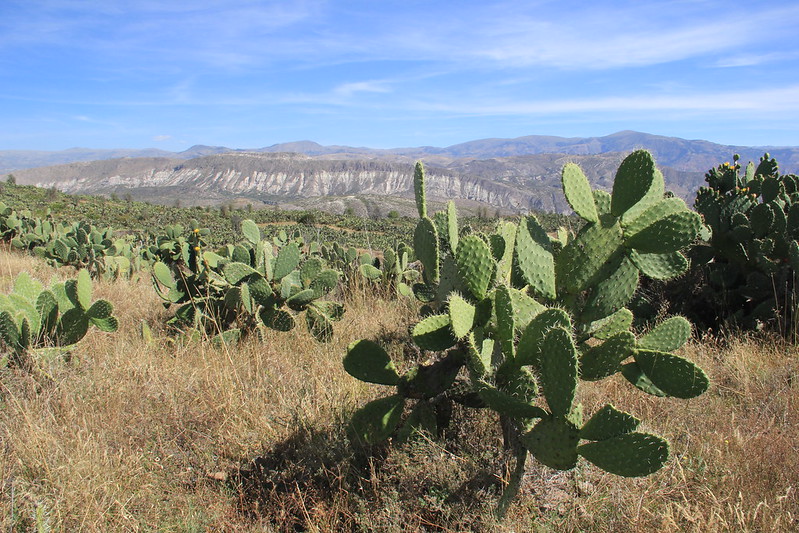

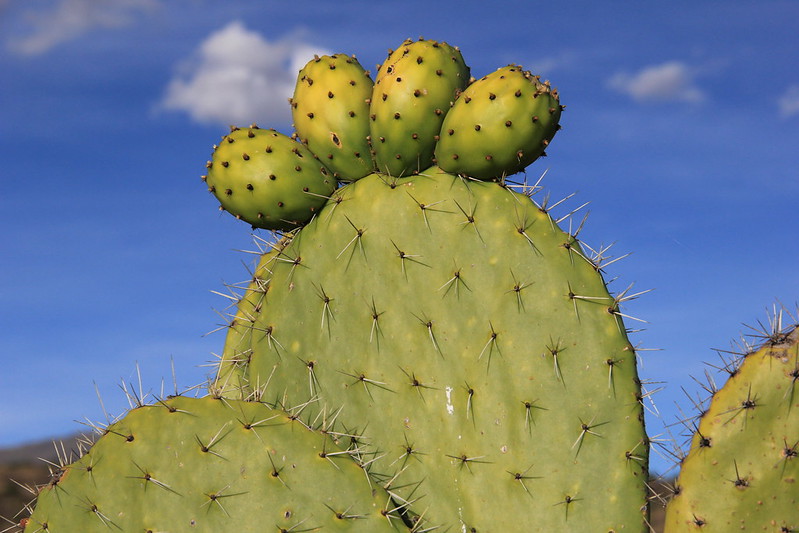
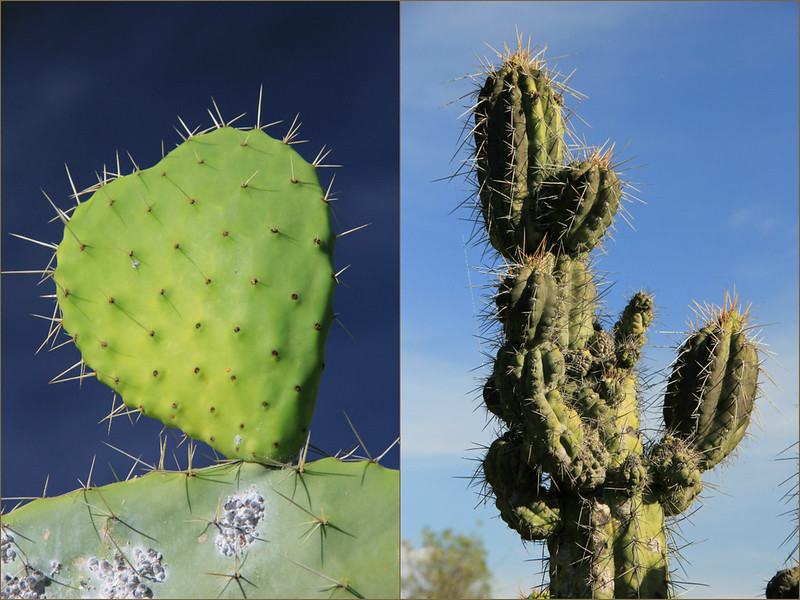
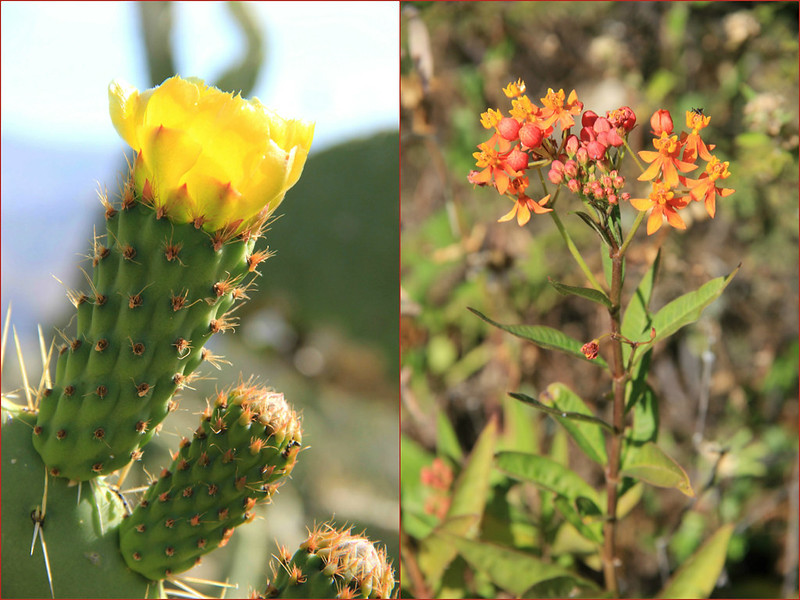
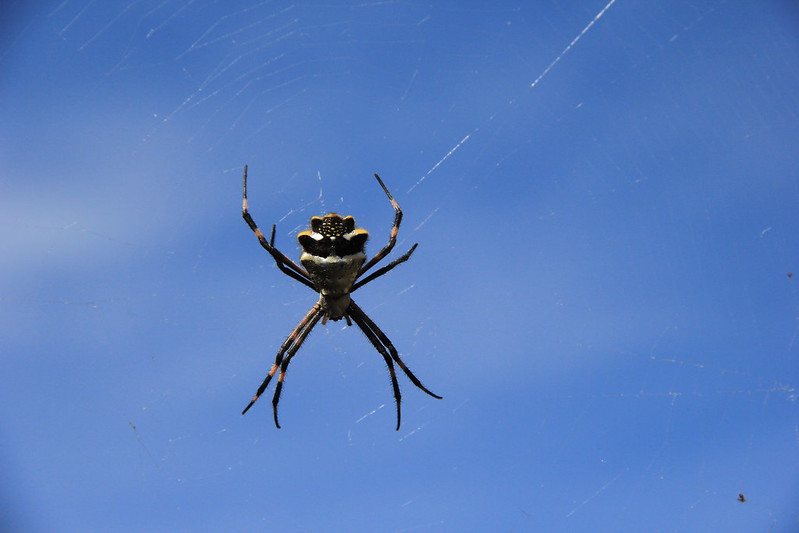
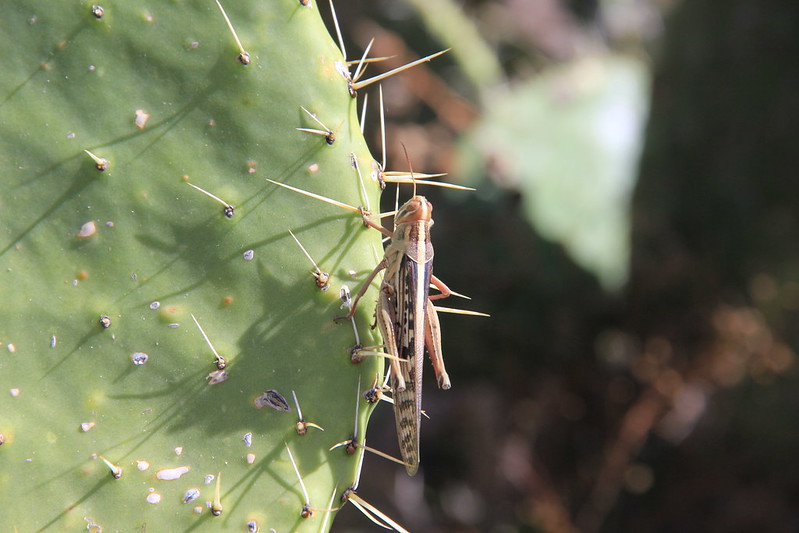
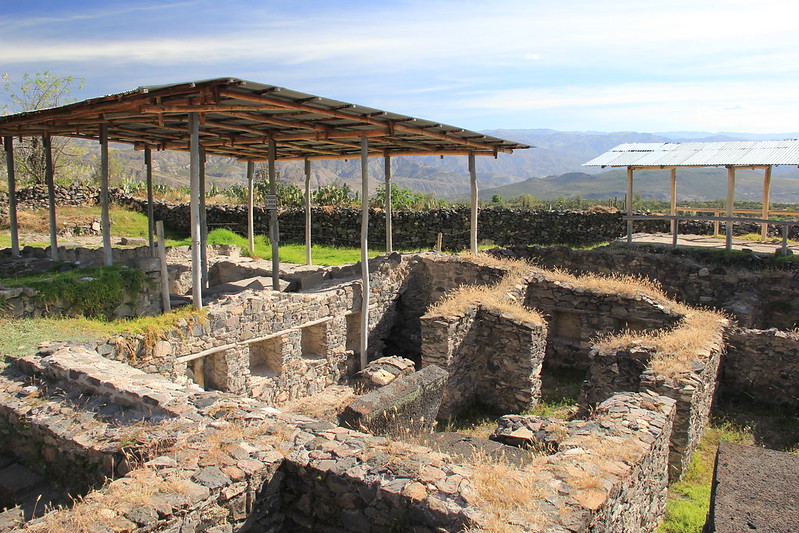
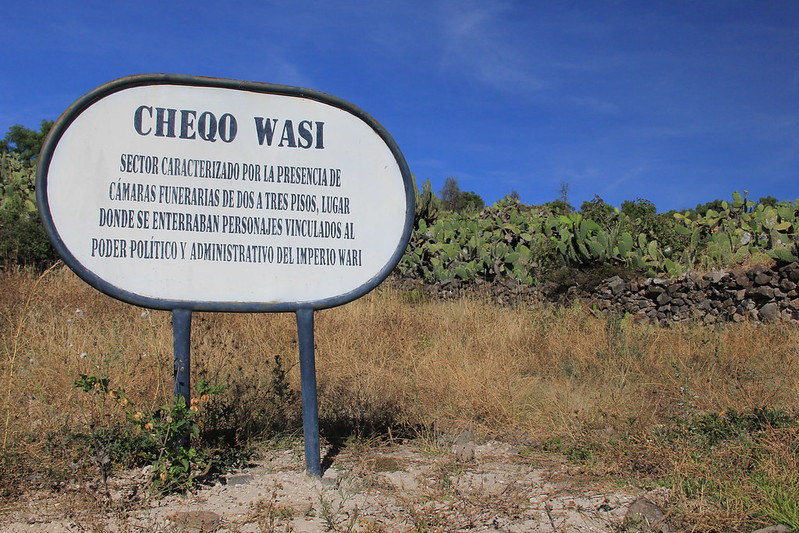
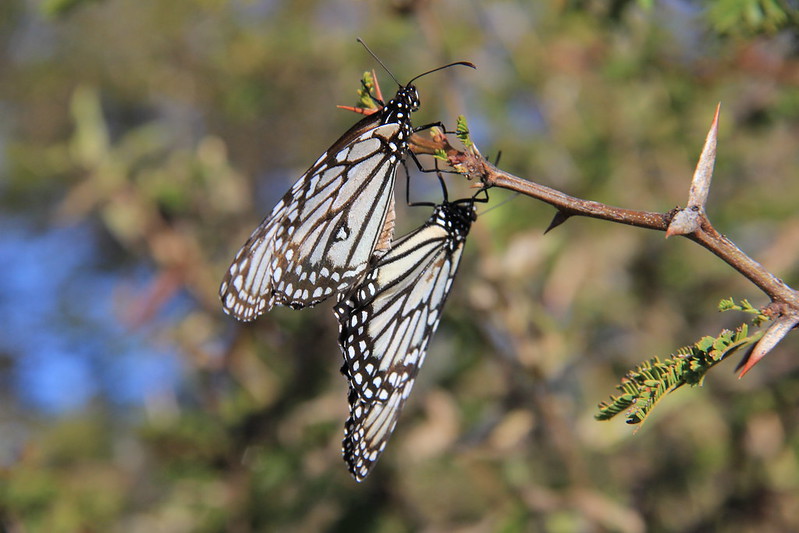

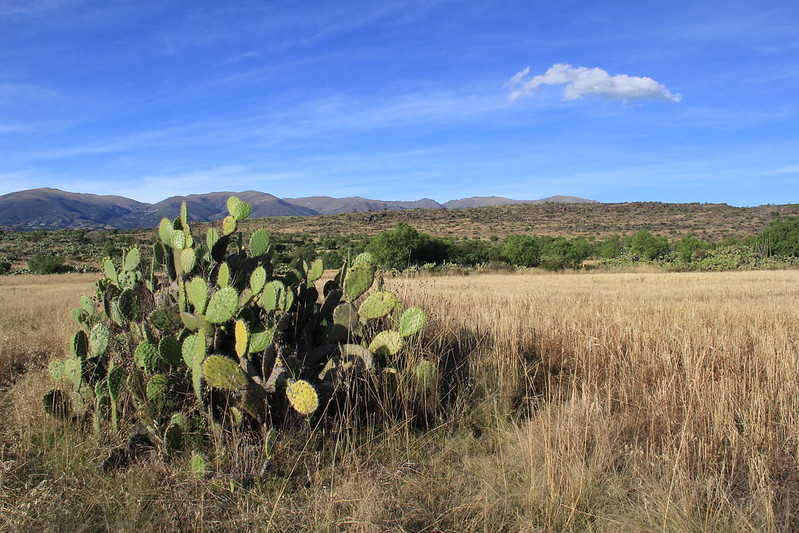
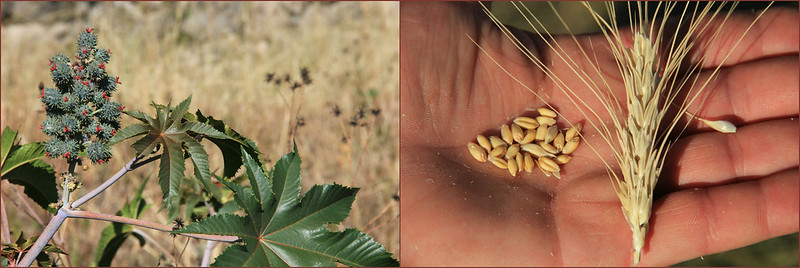
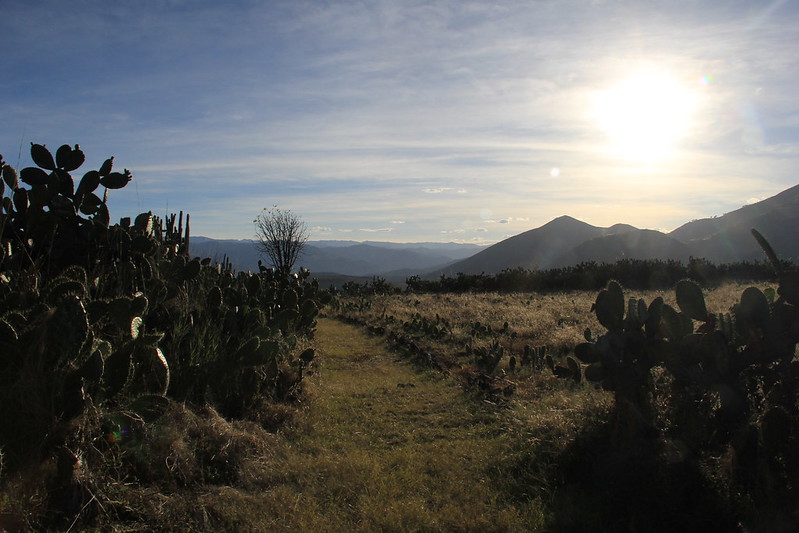






4 Comments
Glad you managed to at least hitch a ride. I too (almost) learned the hard way to always at least try to arrange transport back from relatively remote areas. Nice to have a spot like this all to yourself, isn’t it?
It was lovely, if a little eerie – what with the locusts and caves and human bones!
Beautiful landscapes and cacti! I am not sure I would visit it alone though… too eerie! So good you got a ride back 🙂
I don’t think I would’ve fancied visiting alone either! I’m especially glad I had my boyfriend there when it came to hitching a ride home. I love travelling solo, but there are times that having a man by your side can definitely be beneficial 😉